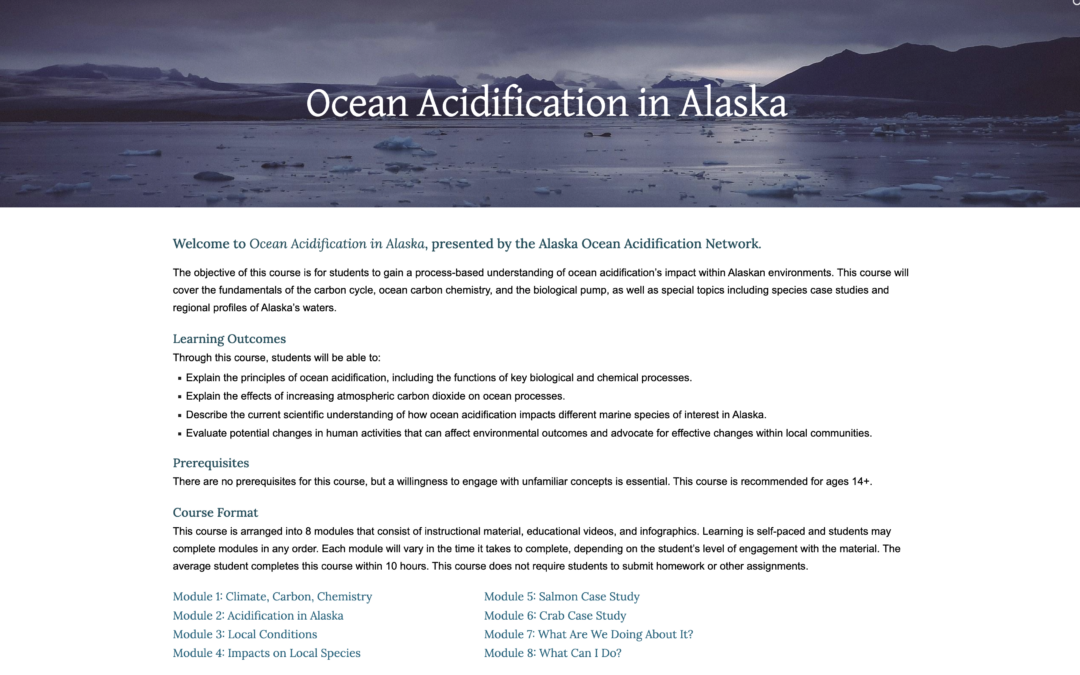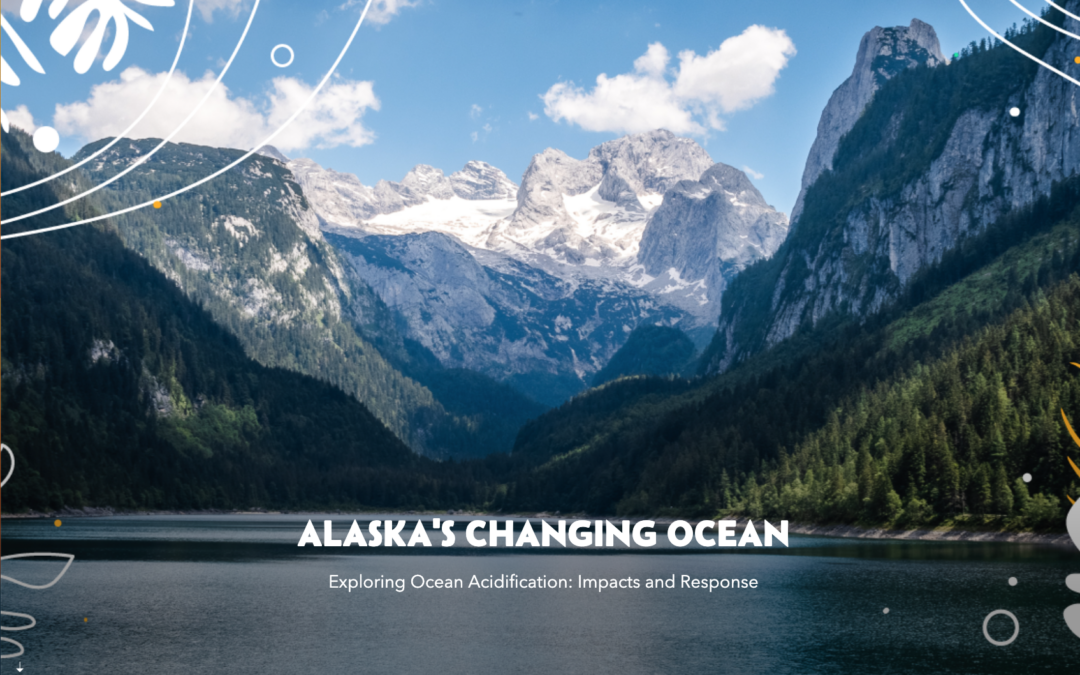News

April 4 webinar: Carbon Dioxide Removal
Join the Alaska OA Network and West coast partners for a webinar on “Assessing effectiveness of marine carbon removal: Measurement, reporting, and verification of ocean alkalinity enhancement”. REGISTER HERE: https://bit.ly/3wYi07d

New “OA in Alaska” online course
The Alaska OA Network is launching a free online course that provides a process-based understanding of ocean acidification’s impacts in Alaska waters. The course comprises 8-modules that are filled with short videos, vibrant photos, and easy-to-digest language.

KBBI: New study shows ocean acidification affects razor clam development
Homer public radio highlights a study from the University of Alaska Fairbanks showing that ocean acidification affects how razor clams forms their shells.

February 13 Webinar: Marine Carbon Dioxide Removal
As carbon dioxide removal becomes a bigger topic in Alaska, the Alaska OA Network is co-hosting and/or circulating learning opportunities so Alaskans can approach this issue from an educated perspective. Join the series to learn more about approaches, challenges and projects underway.

New “OA in Alaska” storymap
This new storymap is a part of a collection of 6 regional maps across the U.S. exploring ocean acidification, what we know in the region, and ways people are engaging.

5 minute survey to shape OA & Climate Discussion Series
The Alaska OA Network is working with partners to develop ideas for discussion series an ocean acidification and climate in early 2024. This short (<5 min) survey will help us select session topics fo the series. Thanks for your input!
